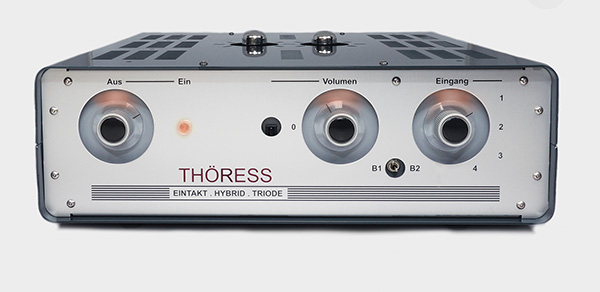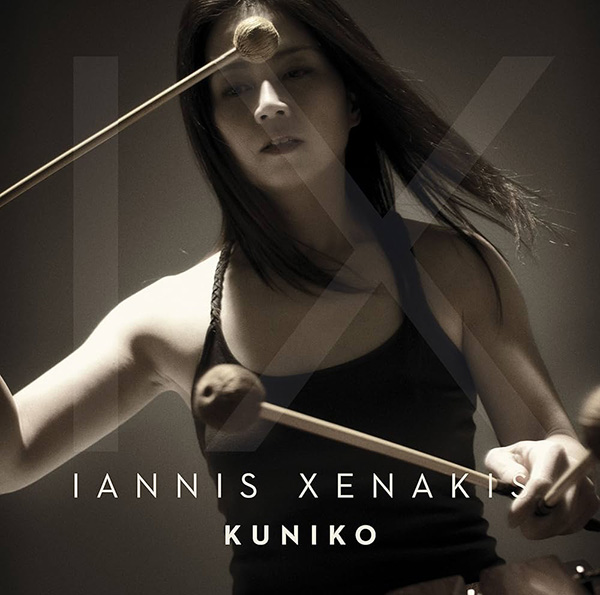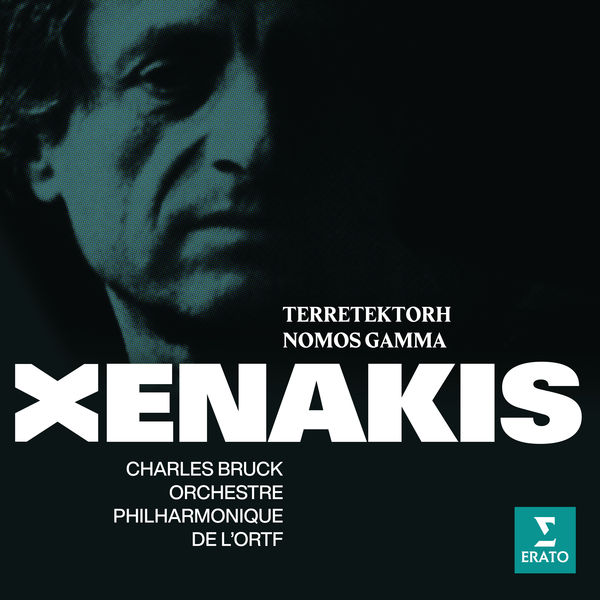| Columns Retired Columns & Blogs |
I'd like to point out that Iannis Xenakis was Greek, not French. He became French citizen later on his life. I highly recommend to check his life at Wikipedia, it may surprise you!

As a life-long film-photo shooter with a darkroom since I was 12, I am particularly disturbed by an aesthetic trend I see in contemporary digital photography: excessive edge sharpening and amped-up contrast structures. These Photoshop/Lightroom tools render captured light into something as unsubtle and blatantly artificial as a Vegas show girl. (There's a real person under there somewhere, but she's hidden.)
Shadows are the connective tissue of our visual reality. The chief effect of artificial edge sharpening is to disrupt our perception of realness.
It seems that those Photoshop abusers are in league aesthetically with certain audio designers in their shared quest for the illusion of resolution. They know that most listeners associate sharpened edges with high resolution and silent empty spaces with low distortion. Neither of those effects exist in the world I observe around me.
Cheap chip DACs and high-feedback amplifiers rely on sharpened edges to garner patronage. That is why I've fallen into the non-oversampling R-2R DAC camp. HoloAudio's Spring3 and May DACs, and the Denafrips Terminator Plus converter, play recordings with the color saturation and contrast structure I associate with vintage Kodacolor film. So does the Thöress EHT integrated amplifier, which specializes in naturally rendered contrasts, a rare virtue.
Just as the shadow matrix maps and dimensionalizes what we see through our eyes, reverb energizes and dimensionalizes what we hear. Sourced by a Roon Nucleus+ server and Denafrips Terminator Plus DAC, Thöress's EHT integrated amplifier portrayed reverb in a manner so natural (energy- and focus-wise), it was hard to remember to listen for it.

If you have not yet discovered Japanese percussion virtuoso Kuniko Kato, I suggest that you go straight to Qobuz and experience the purity of its open spaces, its breathy, scintillating reverb, and the demonstration-quality sounds of her album Xenakis: IX (24/96 FLAC, Linn Records/Qobuz) wherein Kuniko introduces listeners to the supposedly stochastics-based compositions of the late (1922–2001) Romanian-born French composer, architect, and mathematician Iannis Xenakis. This music is all percussion transients and tightly projected reverb expansions. I played it to get a read on how well the sweet, spacious EHT could handle jingling-keys–level transients.
The Thöress EHT passed with four stars in crisp, unetched excellence. This amp played Xenakis in an overtly natural manner, neither too hard nor too soft. That's a good sign that it could satisfy listeners over long hauls.
With DeVore Orangutan O/93s
I was not surprised by how nicely the Thöress danced with the 10" paper woofer cones in my DeVore Acoustics Orangutan O/93 loudspeakers. I guessed in advance that I'd get buttery-smooth, emotionally engaging vocals from Julie London, Frank Sinatra, and George Jones, and I did, but I never would have guessed that I'd prefer the EHT's brighter, more focused clarity to the First Watt SIT-3's lusher, deeper, but less-transparent presentation. Yet I did. I've used a lot of amplifiers with the DeVore O/93s. I like them best when they are full-action alive with Line Magnetic's LM-518IA 845 tube amp, but the EHT hybrid brought its own nice form of tube-like vividosity.
With Heretic AD614s
I wish you could experience with me how dramatic it feels changing from a 5" woofer in a 12"-high box to a 12" coaxial driver in a 24"-high cabinet with a mailbox-sized hole in the front. Going from an 83dB-sensitive speaker to 97dB-sensitive speaker is a radical change. The gain of the Thöress seemed too low for the low-sensitivity Falcons. At my normal listening volumes, the volume knob pointed at the right side of the dial. With the Heretics, the knob stayed pointing at the left side—and the jump-factor increased dramatically.
Every time I switch from the near-perfect space and tone of the Falcon LS3/5a's to the Heretic AD614s, the first thing I notice is how unvivid and small-voiced the Gold Badges are and how raw, direct, and music-is-there the paper-cone Heretics feel. The Falcons encouraged me to dream by directing me to peer inside a conelike illusion of space. The Heretics make performers and instruments more room-present while forcing me to ride the beat with involuntary toe-tapping. They pull me forward, closer to the action, while the Falcons urge me to lay back and admire what is unfolding behind the speakers.
Those observations came to me as I streamed a rendition of one of my favorite albums of my whole lifetime: the Budapest String Quartet playing Beethoven: String Quartet No.7 in F Major, Op.59, No.1 (24/192 FLAC, Sony Classical/Qobuz). On my Roon Albums page, this early '50s mono recording is always at the top of my "most played" list. (Decades ago, I owned the whole Columbia set, The Complete String Quartets of Ludwig van Beethoven, Columbia LP 4579.) With the Thöress EHT driving the Falcons, the perspective on this recording was darker than I'm used to, and the performers were situated more distinctly behind the speakers. As I listened, my mind was drawn to speculating about what Vienna circa 1820 was like and what this music must have seemed like to Viennese audiences of the time. I wondered: What did they appreciate?
With the Thöress EHT powering the big-box Heretics, the presentation expanded and moved closer; more-distinct layers of low-level information were being rendered. I became engaged trying to follow what each musician was doing and admiring their individual talents, stopping only for a moment here and there to admire the electrostatic speed and flawless tone of the AD614s.
Streaming Alfred Schnittke's Concerto Grosso No.2, performed by Gennady Rozhdestvensky and the Russian State Orchestra (16/44.1 FLAC CDK Music/Tidal), the EHT-Heretic combo made it sound much as it did when I owned Quad 57 electrostatics, but less compressed.
Most of all, this Heretic-EHT pairing reminded me how much I enjoy the feel of a sound system that pressurizes more air than the Falcons, which were designed to pressurize the back space in a little van. Like my friend's big RCA speakers in his church-size room, my room seems scaled perfectly for the Heretics: They play full and large but also squeaky clean and microtextured, no mud or blur. Plus! Their easy-to-drive series crossover permits me to examine amplifier flavors under unstressed driving conditions, a test the EHT passed with a perfect score. The fact of its transparency was obvious. What's more—the reason this was a superb pairing—the Thöress added some rosy cheek hormones to the Heretic's naturally dryish sound. The EHT's chorus of low-key intangibles made the Heretics sound more liquid and charming than they do with the amplifier I usually use, the Elekit TU-8900 fitted with RCA 2A3 tubes, and more naturally detailed than they do with the Parasound A 21+.

B1 or B2?
The EHT MKII version, which was introduced last October, added a toggle switch allowing the user to choose neutral (the middle position) or either of two bass-boost settings, B1 or B2. When I first tried B1, I thought it was a trick—that Reinhard was rolling off the treble to bring the bass and midrange up. But as I listened more carefully, alternating between B1 and flat, I found that the slight swell, maybe 5dB around 80–90Hz, was adding length and fullness to reverb sounds. When I turned off, Iannis Xenakis's composition Terretektorh, performed by Charles Bruck and the Orchestre Philharmonique De L'ORTF (24/192 FLAC Warner Classics/Qobuz), became decidedly drier. To my surprise, with the Heretic AD614s, I enjoyed the B1 boost because the added depth and scale of low-frequency resonances allowed me to better see how Xenakis staged his drama of scintillating sonic metaphors for a completely reverberant environment. With this piece at least, B1's deviation from flat response seemed tastefully chosen.
What about B2? Playing Terretektorh with B2 active added too much gurgling wetness to Xenakis's fleeting illusions of a dripping water cistern (a homage to Pauline Oliveros?). While B1 added a pleasant extension to reverb tails, it also muddied audience applause at the end of Terretektorh. I marked that as a failure. Bass boost is as bass boost does.
Conclusion
My first experience with hybrid amplifiers of any kind was the 150Wpc New York Audio Labs Moscode 300 power amplifier, which was loaned to me, along with a Futterman H3a OTL, by audio chieftain Harvey Rosenberg. That amp lived to give my Rogers LS3/5a and Quad 57s a full-bodied glow and an easy, relaxed dynamic. It featured a two-tube input and a MOSFET output and, if I remember right, sounded grainier, less transparent, and less colorful than the super-refined Thöress EHT. But! When the Moscode 300 appeared, it made a super-strong case for hybrid designs, which have continued to develop and are now more popular than ever.
While I enjoyed that early hybrid, I learned that any component change I make to my system should bring my system closer to what pleases me, that makes listening to recordings more satisfying than it had been in the previous arrangement. The Thöress EHT integrated amplifier did that with the DeVore O/93s, my Falcon Gold Badges, and most emphatically with the new Heretic AD614s.
I didn't even try to see if the low-powered EHT would choke itself dry on the hard-to-drive GoldenEar BRXes or the current-hungry Magnepan .7s. I felt those types of experiments were unnecessary, an obvious mismatch. The Thöress EHT was created to deliver high-toned elegance, conspicuous musicality, and gratifying precision to easy-to-drive speakers like the ones I used it with. That's its raison d'être and the reason I recommend it.

I'd like to point out that Iannis Xenakis was Greek, not French. He became French citizen later on his life. I highly recommend to check his life at Wikipedia, it may surprise you!


Way back when my wife and I were dating Xenakis was one of the ones that I'd queue up and have her wondering if she made a mistake. I'd compound the problem by trying to explain some of the math. She'd just scrunch her face and go "why?" Sncne then I've given her better reasons to question her choice.

No overblown casework or indecipherable controls.

Off the shelf t save money? It looks like an old instrument case to me- probably deliberately

Love it!!! That album is possibly the pinnacle of the incredibly refined texture of tango that Piazzolla created.

... you might enjoy this recording:
https://www.steinway.com/music-and-artists/label/tango-nuevo-pablo-ziegler-john-o-riley

I am a sucker for Kossinskaja's transcription of Oblivion for guitar.

When I saw the picture I had hoped the whole article would be about that RCA theater horn system. Info about RCA, WE, and Altec systems on the internet seem to be mostly limited to discussion boards, so I’d love to read a proper article from you about them. At the most basic level: why three channels for audio that was only recorded in mono? How is the source > preamp > amp chain set up for a system like this? How many amps would have to be used? What happens when you use a solid state Crown amp to drive these instead of tubes? And so on.
I do have a music recommendation for you: you can find it on Tidal with the album title “Some Mississippi Sunday Morning” under the artist Parchman Farm Prayer, though the LP jacket suggests the latter is the title and the former is the subtitle. A live field recording of prisoners at Parchman Farm singing at their Sunday chapel, made by Ian Brennan (who has worked with Tinariwen). Sense of recorded space is off the charts. It’s like a contemporary Lomax recording. Transparent is probably the best description — you can feel the creaky floorboards, breath the Mississippi air, and feel the despair, longing, regret, and caged joy of every man singing.

a little bit deeper to "Some Mississippi Sunday Morning" while I am typing these words; you are right, it is deep and spacious! Beautiful sound.
For real horn info you'll have to venture beyond my limited knowledge. I recommend "High Quality Horn Loudspeaker Systems" by Bjørn Kolbrek and Thomas Dunker. Both authors are top-level wizards.
It covers everything and can be bought from Parts Express
good luck on your adventure
the system in the photo was operating with two speakers in stereo
herb

I would LOVE to listen to the Dead through that amazing system.
My friend has modified Klipsch K-Horns with bass bins and SET Monoblock's and what a beautiful system.
The cat with that system sure ate the canary.
Wicked cool system!!!

the host played an R2R tape made at a Dead concert
it forced revelers into quietude
h